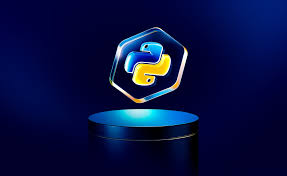Python has become one of the most popular and versatile programming languages, widely used in various domains such as web development, data science, artificial intelligence, machine learning, automation, and more. Python’s simplicity, readability, and extensive community support have made it the language of choice for both beginners and experienced developers. Let’s explore how Python is revolutionizing the programming world.
1. Ease of Learning and Readability
One of the key reasons Python has gained such popularity is its simplicity and readability. Unlike many other programming languages, Python’s syntax is clear and straightforward, which makes it easy to learn for beginners. The language is designed to be easy to understand and write, focusing on natural language-like commands. This ease of learning makes it an ideal choice for newcomers to programming.
Python’s readable code structure also enables developers to maintain and update their projects with ease. This reduces the chances of errors and makes collaboration among team members more efficient.
Conclusion: Python’s simplicity and readability have made it one of the most user-friendly programming languages, making it easy to learn and work with, even for those new to coding.
2. Versatility and Wide Applications
Python’s versatility is one of its most compelling features. It can be used in various domains, from web development and software engineering to data science, machine learning, artificial intelligence, and automation. This wide range of applications has allowed Python to become the go-to language in many fields.
For instance, Python’s use in web development is powered by frameworks like Django and Flask. In data science, libraries such as Pandas, NumPy, and Matplotlib allow developers to manipulate, analyze, and visualize data with ease. Furthermore, Python has become the primary language for machine learning and artificial intelligence, with popular libraries such as TensorFlow, Keras, and PyTorch.
Conclusion: Python’s ability to be used across various domains, including web development, data science, AI, and automation, has made it incredibly versatile and in-demand in the programming world.
3. Extensive Libraries and Frameworks
One of the biggest advantages of Python is its rich ecosystem of libraries and frameworks that simplify and accelerate development. Libraries such as NumPy and SciPy provide essential tools for scientific computing, while TensorFlow and PyTorch offer powerful frameworks for deep learning and AI development.
Additionally, Python’s extensive web development frameworks like Django and Flask make it easier to create robust and scalable web applications quickly. Whether you’re building an AI model, automating repetitive tasks, or creating a web app, Python’s comprehensive set of libraries and frameworks will make the process smoother and more efficient.
Conclusion: Python’s vast collection of libraries and frameworks makes it a versatile language, allowing developers to accomplish tasks efficiently without reinventing the wheel.
4. Strong Community and Support
Python’s large and active community is another reason for its widespread use. The community constantly develops new resources, tutorials, libraries, and frameworks, providing excellent support for Python developers. With a wealth of online resources such as documentation, forums, and user groups, programmers can easily find solutions to problems or share ideas.
Moreover, the open-source nature of Python has contributed to the growth of its community. Anyone can contribute to its development or share their projects with others, ensuring continuous improvement and innovation.
Conclusion: Python’s strong community and open-source nature ensure continuous support and growth, making it easy for developers to find solutions and share knowledge.
5. Cross-Platform Compatibility
Python is known for its cross-platform capabilities, meaning that Python programs can run on various operating systems, including Windows, Linux, and macOS. This feature makes Python an excellent choice for projects that need to be compatible with multiple platforms. Developers can write code once and deploy it on different systems without having to worry about platform-specific issues.
In addition, Python’s integration with other languages such as C, C++, and Java allows for even greater flexibility and functionality. This makes Python a valuable tool for creating scalable and high-performance applications.
Conclusion: Python’s cross-platform compatibility makes it a versatile language for developing applications that work across different operating systems.
6. Automation and Scripting
Python is widely used for automation tasks, from simple file operations to more complex tasks like web scraping, data processing, and system administration. Its powerful libraries like Selenium and BeautifulSoup allow developers to automate web interactions and extract data from websites. In system administration, Python scripts are often used to automate routine tasks, such as backups, file management, and network monitoring.
Python’s ease of use and ability to work with a wide range of applications and services make it an ideal language for automating repetitive tasks and improving efficiency.
Conclusion: Python’s simplicity and powerful libraries make it an excellent choice for automating tasks and enhancing productivity in various domains.
7. Python in Data Science and Machine Learning
Python has become the go-to language for data science and machine learning due to its robust ecosystem of tools and libraries. Libraries such as Pandas, NumPy, and SciPy make data manipulation and analysis efficient, while Matplotlib and Seaborn allow for easy data visualization.
Moreover, Python is widely used in machine learning and artificial intelligence because of frameworks such as TensorFlow, Keras, and Scikit-learn, which make it easy to develop complex machine learning models. Python’s flexibility and ease of integration with other tools have made it a central language in the world of data science.
Conclusion:
Python’s popularity in data science and machine learning is fueled by its powerful libraries, making it an indispensable tool for data manipulation, analysis, and modeling.Python has emerged as a revolutionary language in the programming world due to its simplicity, versatility, extensive libraries, and strong community support. From web development to machine learning, data science, automation, and beyond, Python continues to shape the future of programming. Its user-friendly nature and adaptability across multiple platforms make it an essential tool for developers, businesses, and data scientists alike.

